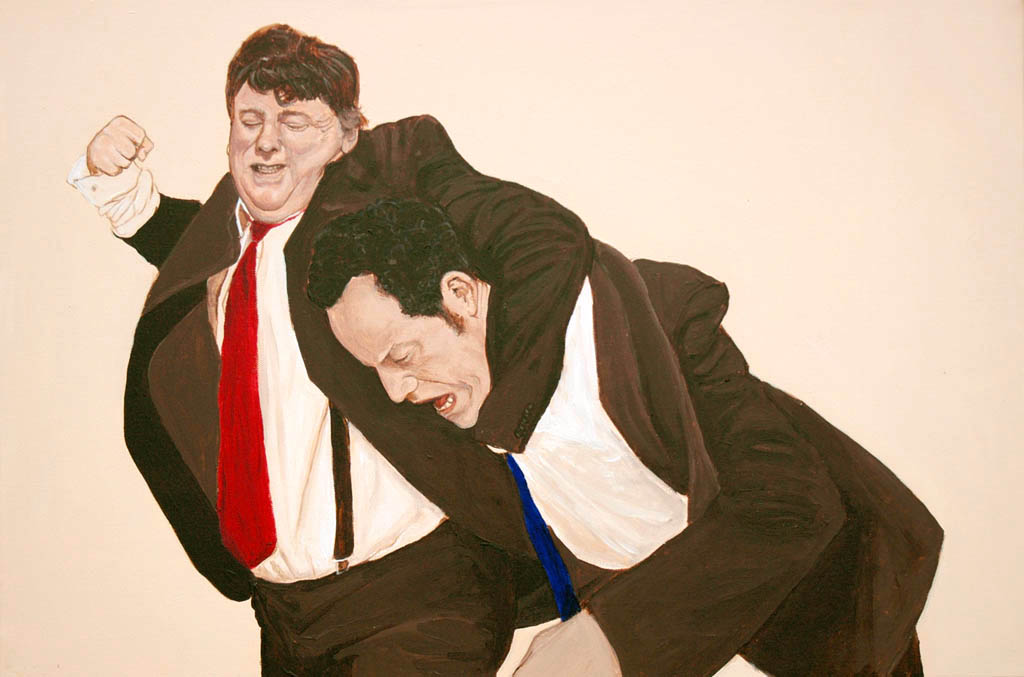
Author: eric
Chris

Nick

Daisy
I’ve been experimenting with a new series, based on the golden ratio – one eye of the subject resides at the exact intersection of the golden mean on both axes of the canvas.

Tim
A diptych of Tim Leopard, representing two of his multifarious moods.
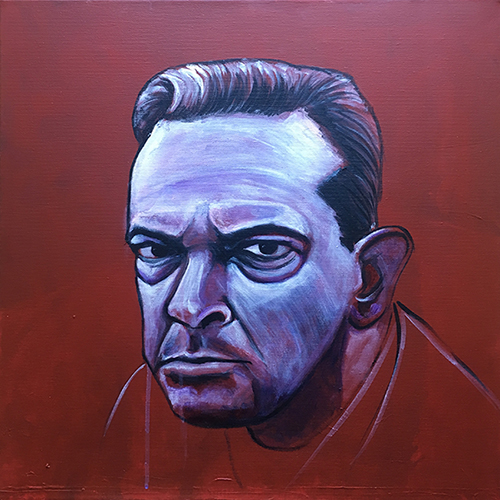
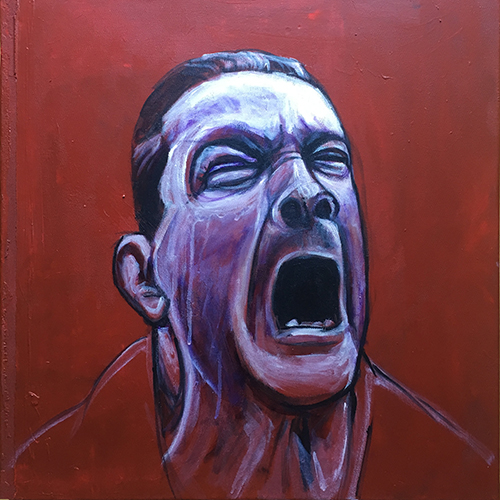
Migration Patterns
Everyone has a story, and their story is there to be read on their faces. This is a collection of portraits of Brighton people, each painted onto a map of their adolescent homeland. The teenage years are when (where) we define ourselves. Each of the subjects have been drawn to Brighton from disparate parts of the country, and it’s my conjecture that their defining characteristics that brought them to this town were formed in those difficult teenage years.
Alongside the images are recordings of each of the subjects, recounting stories from their formative years, perhaps revealing an insight into the kind of people they have become, and the journey that led them to settle in Brighton.




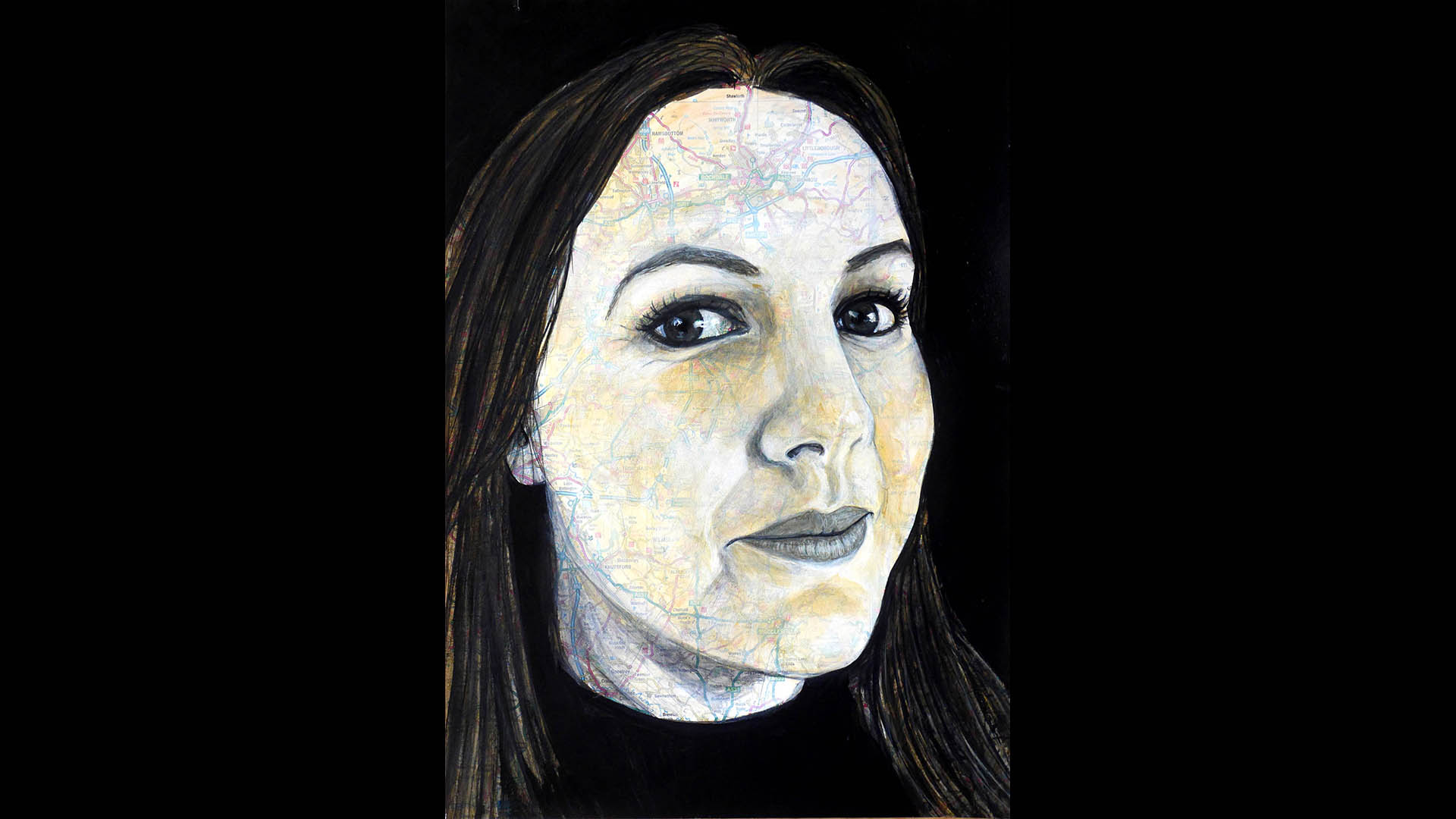

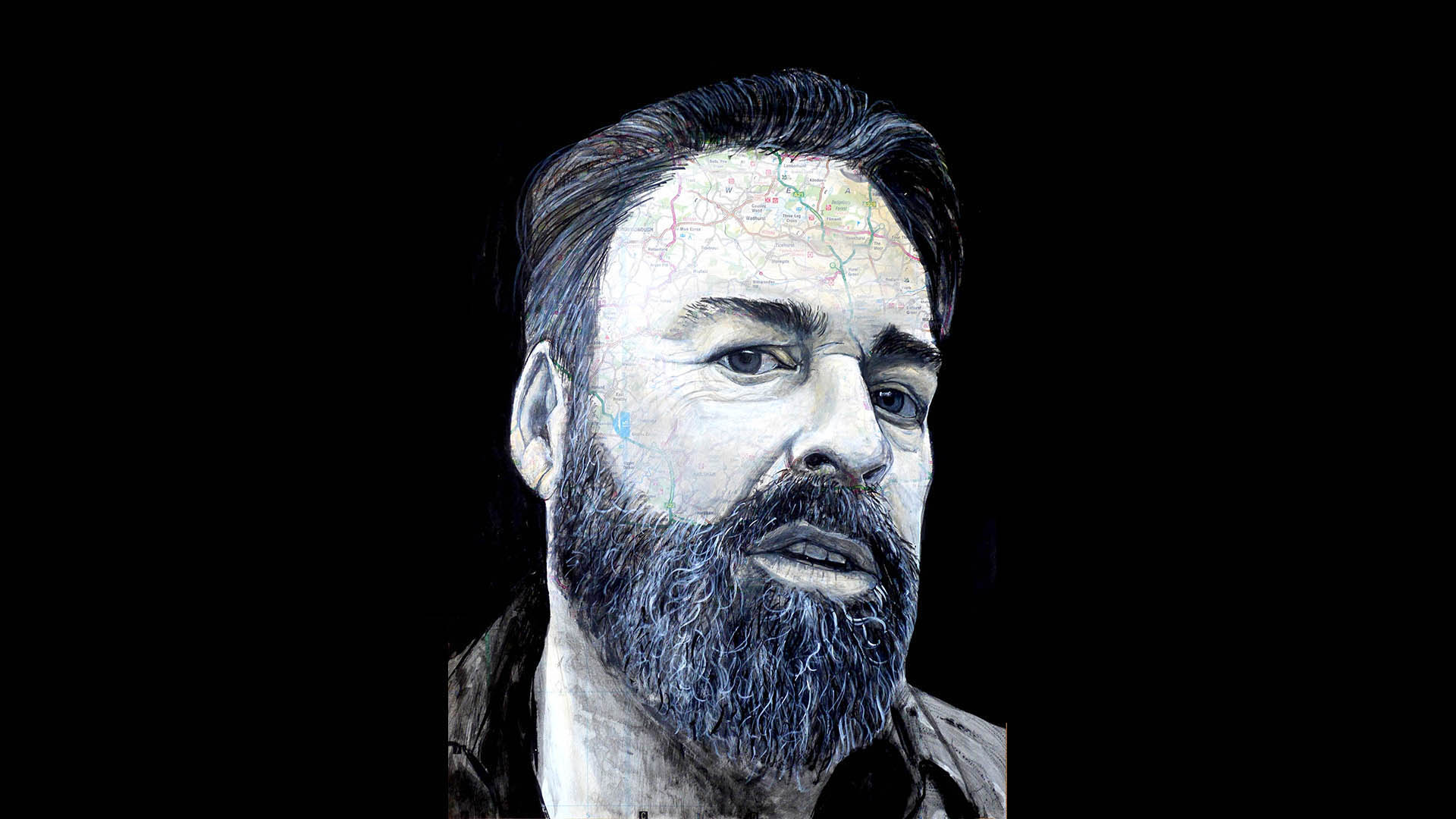
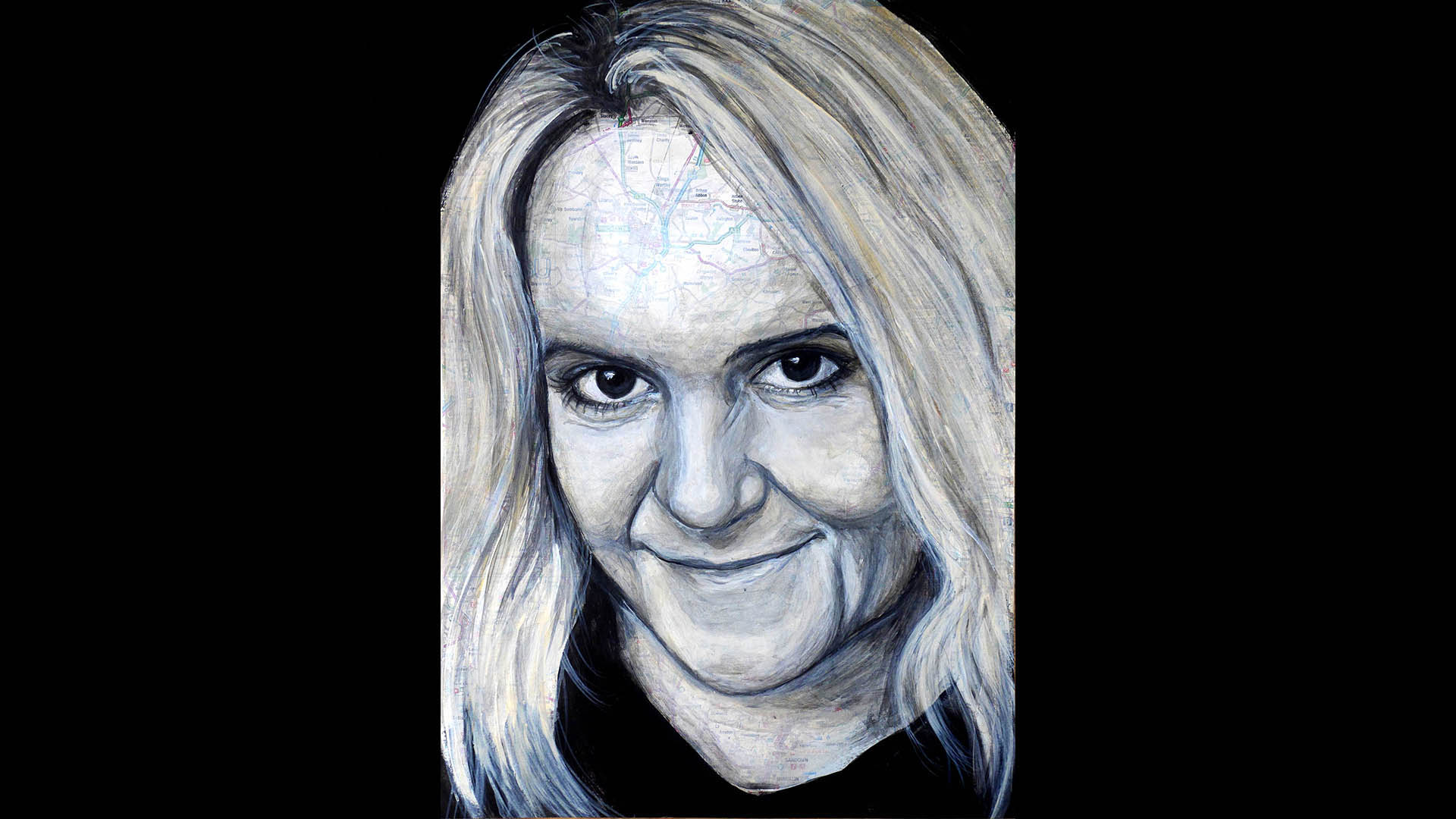



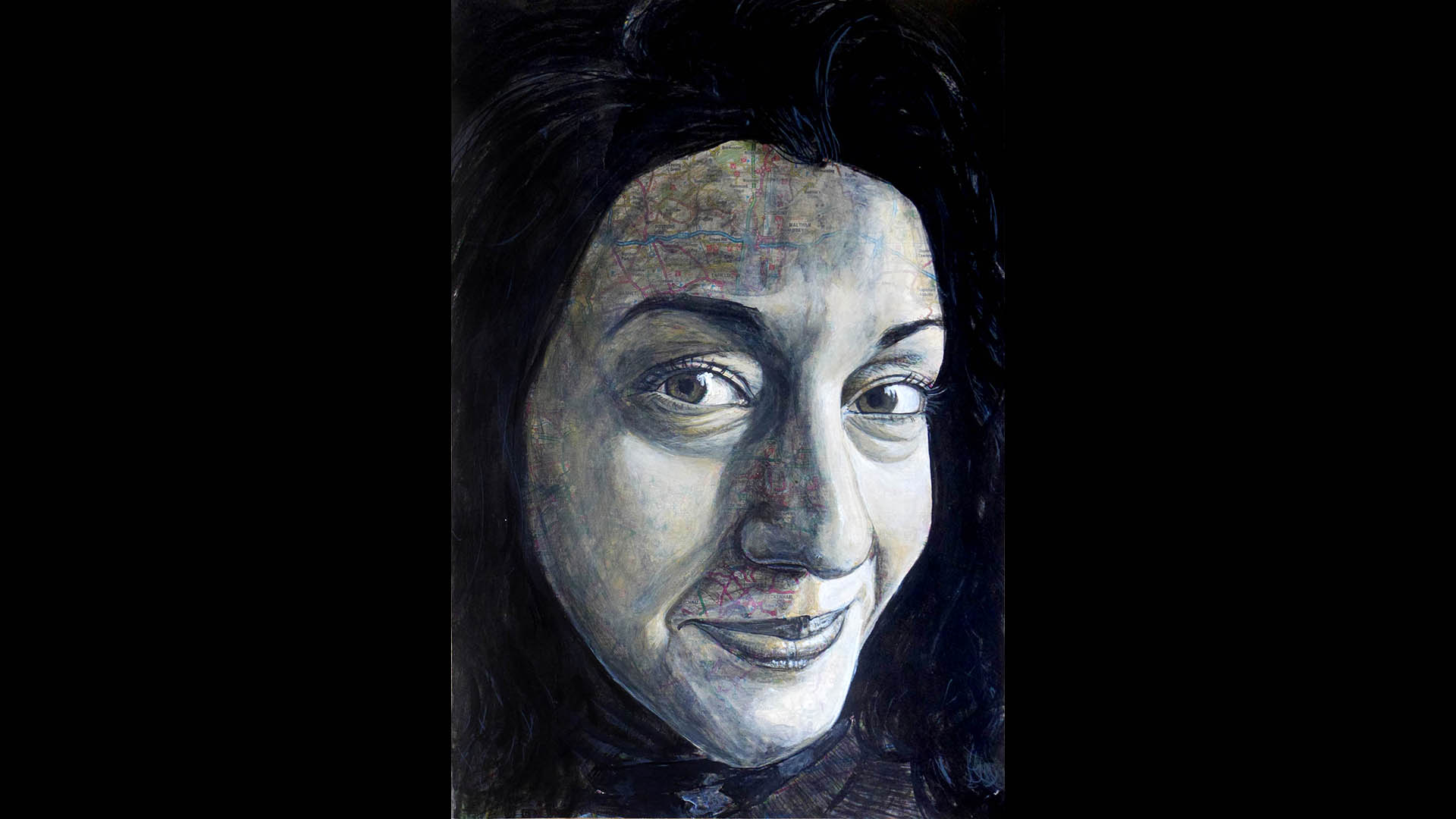

Robin, laughing
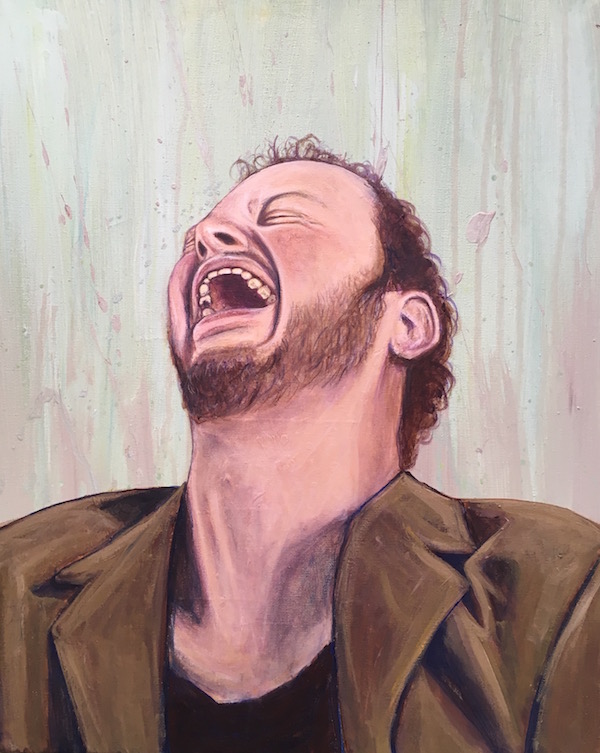
Private Collection
New activity in your timeline.
Approximately 4 million years ago, our ancestors adopted Bipedalism, freeing up their hands for more dexterous activities.
However, in recent years, our sophisticated tool making skills have resulted in the creation of the smart phone. A scrying mirror so compelling, that we willingly give up the use of one of our hands, disengage from the present moment, and hunch over our devices, literally deforming us.
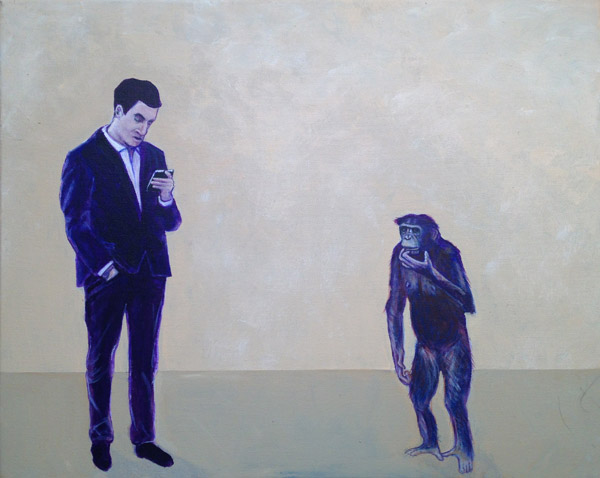
acrylic on canvas, 405mm x 510mm
You can buy the original, and prints at Saatchi Online
fffarage
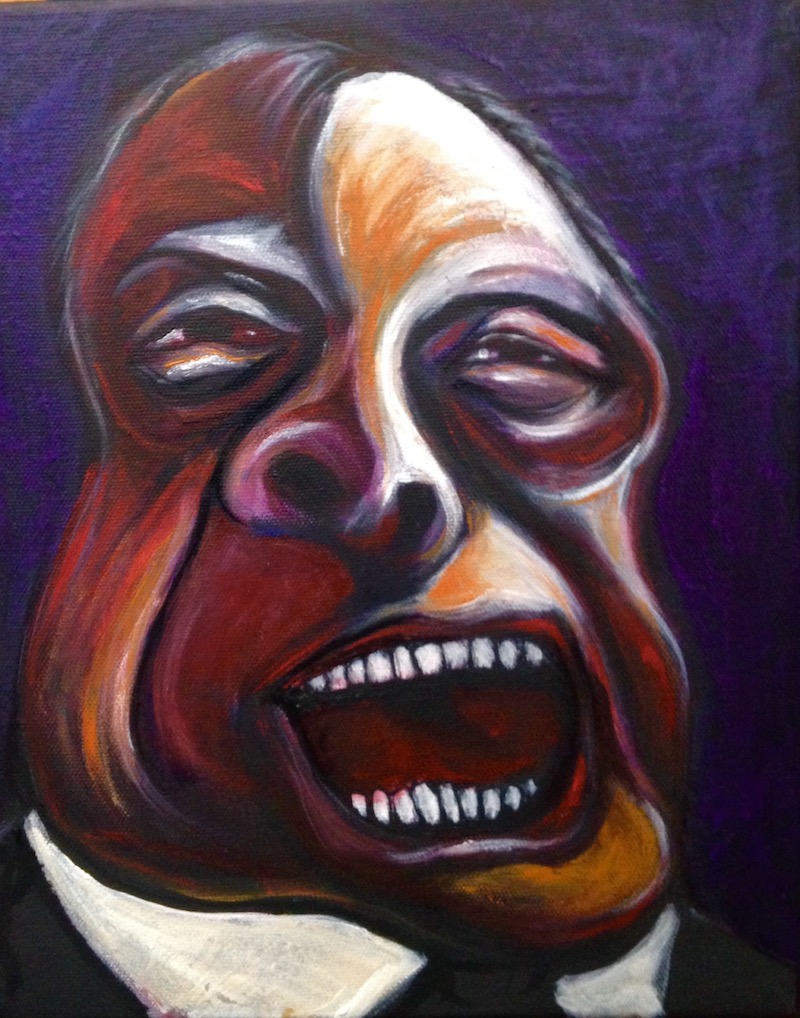
acrylic on canvas 250mm x 300mm
Diogenes and the chicken
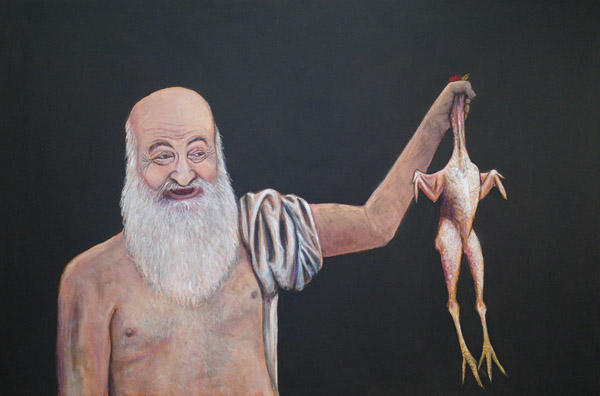
Acrylic on canvas 762mm x 508mm (30″ x 20″)
Diogenes is my favourite ancient greek philosopher.
Diogenes made a virtue of poverty. He begged for a living and often slept in a large ceramic jar in the marketplace. He became notorious for his philosophical stunts such as carrying a lamp in the daytime, claiming to be looking for an honest man. He criticized and embarrassed Plato, disputed his interpretation of Socrates and sabotaged his lectures, sometimes distracting attendees by bringing food and eating during the discussions. Diogenes was also responsible for publicly mocking Alexander the Great.
Here I have painted him holding a plucked chicken, a reference to one of his infamous run-ins with Plato.
Plato liked to ‘interpret’ Socrates, and on one occasion spoke of his definition of man as a “featherless biped”.
Allegedly, Diogenes plucked a chicken and brought it into Plato’s Academy, saying, “Behold! I’ve brought you a man.”
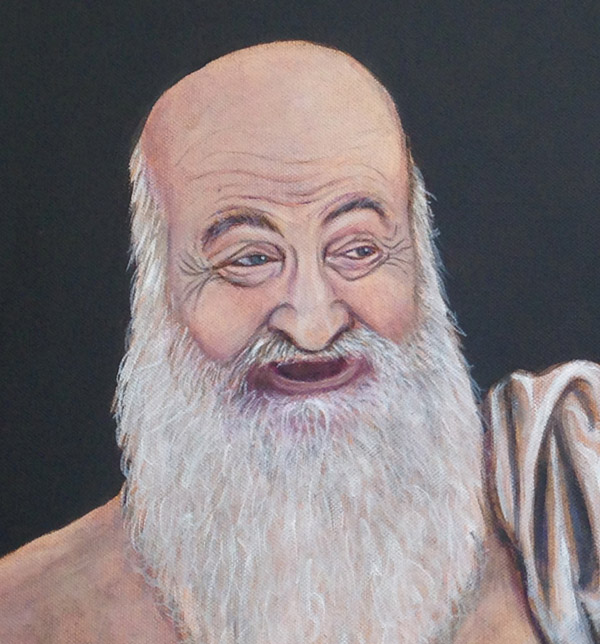
Peter
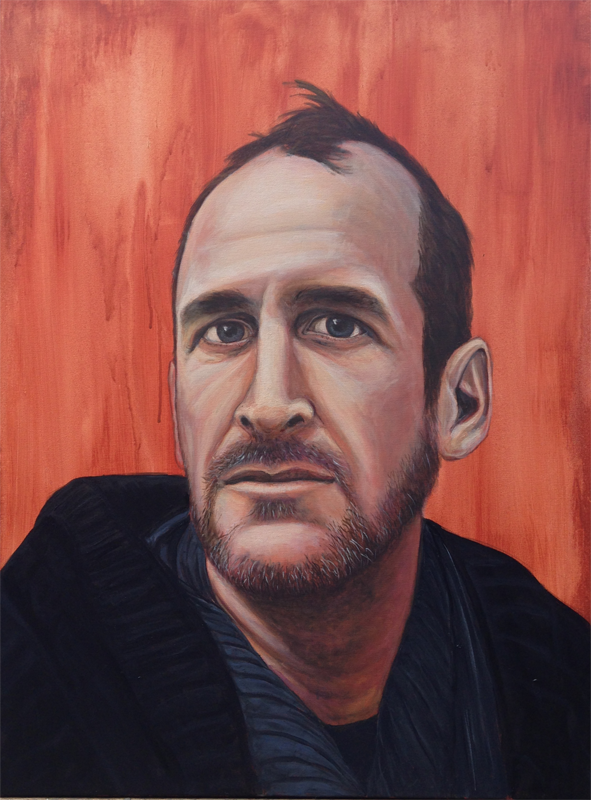
acrylic on canvas 762mm x 1062mm
A portrait of a good friend, I don’t see often enough.
Meredith
I met Meredith sometime around 1995, after she left a note in my pigeonhole in Oxford, suggesting we meet. I had no idea who she was, but agreed anyway. We spent a delightful evening in a bar where she told me various tales of her life in Hollywood.
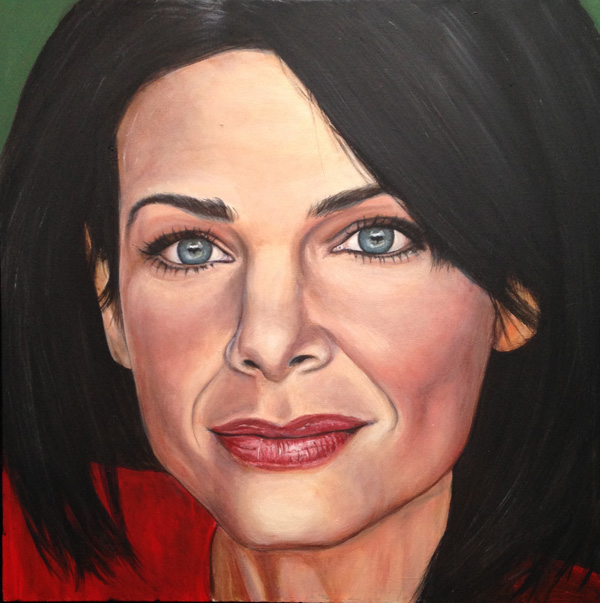
Acrylic on canvas 600mm x 600mm
Our paths crossed again, a few months later, when I found myself in LA. It was there that we shared that most unique of American experiences – being held up at gun-point in an alley in West Hollywood. I distinctly remember the barrel of the gun being thrust into my chest, coupled with the demand “give me your money, motherfucker!”.
That was 20 years ago, and though our paths have crossed a few times since, I don’t think we’ve been in the same room for over a decade. Hence this painting has been derived from photographs, rather than a traditional sitting. It is more the ‘idea’ of Meredith, rather than the ‘actuality’.
Given her career as an actress, this feels somehow fitting.
Rik
I’m certainly not alone in mourning the recent death of Rik Mayall. A character inexorably linked to my childhood, from Kevin Turvey, through The Dangerous Brothers, Bottom, The New Statesman, etc.
However, for me, he will always be most fondly remembered as ‘Rik’ on The Young Ones. I watched it whilst a teen, long before I’d experienced the delights of student living for myself. While Vyvian clearly showed the most pleasingly anarchic behaviour, it was Rik, and his desperate quest to gain the respect of his housemates that really stuck in my mind.
R.I.P. The people’s poet.
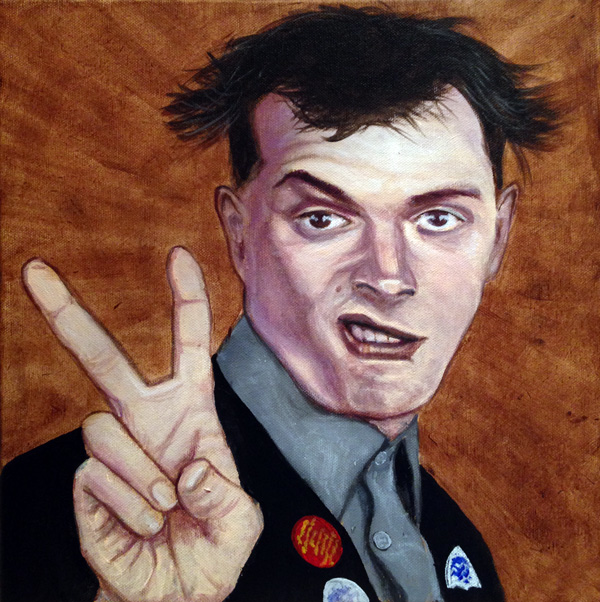
Ada Lovelace [after Chalon et al]
In celebration of Ada Lovelace Day I offer up a new painting of the world’s first computer programmer. Ada is a fascinating character, beyond the notoriety of her birth and her scientific contributions.
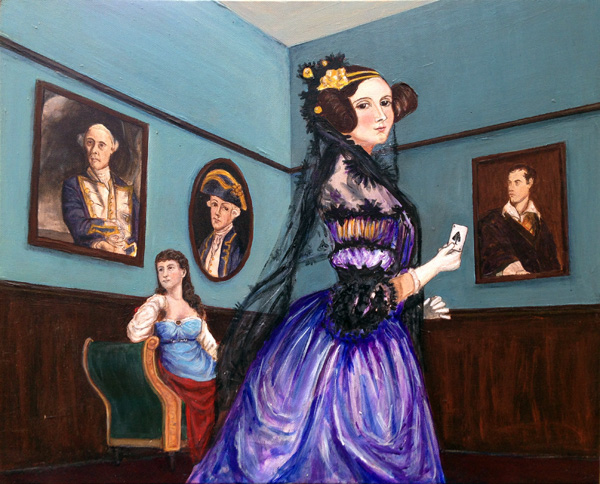
Buy this painting at Saatchi online
Ada was the only legitimate child of Lord Byron, the romantic poet, and Anne Isabella Milbanke, a highly intelligent member of the British aristocracy.
The painting features Ada surrounded by the ghosts of the male dominated society in which she was raised. From left to right the paintings on the walls show Byron’s Grandfather, ‘Foulweather Jack’, an officer in the Navy, Byron’s Father ‘Mad Jack’ Byron, an army officer and Byron himself, on the wall facing Ada.
Reclining in the background we find Ada’s mother, her face turned away from her daughter.
Ada’s mother was known as ‘the princess of parallelograms’, due to her love of mathematics, a trait she passed on to her daughter. But by all accounts her mother was absent for much of Ada’s life – she was raised by her doting grandmother.
What fascinates me is how Ada’s insight and keen analytical mind were clearly the combination of her mother’s mathematical skills and her father’s creative impulses, despite them both being effectively absent from her childhood.
The ace of spades she holds in her hand references both Ada’s love of gambling, and the fact that she held the winning card in terms of realising the power of computational devices (despite the controversy over the extent of her contributions).
The composition itself is comprised of references to five other paintings[1][2][3][4][5], and was initially composed inside Sketchup, a software based 3d modelling application, before being painted – the fact that a painting can be composed inside software is a direct result of Ada Lovelace’s groundbreaking mathematical works.
Who watches the Watchers?
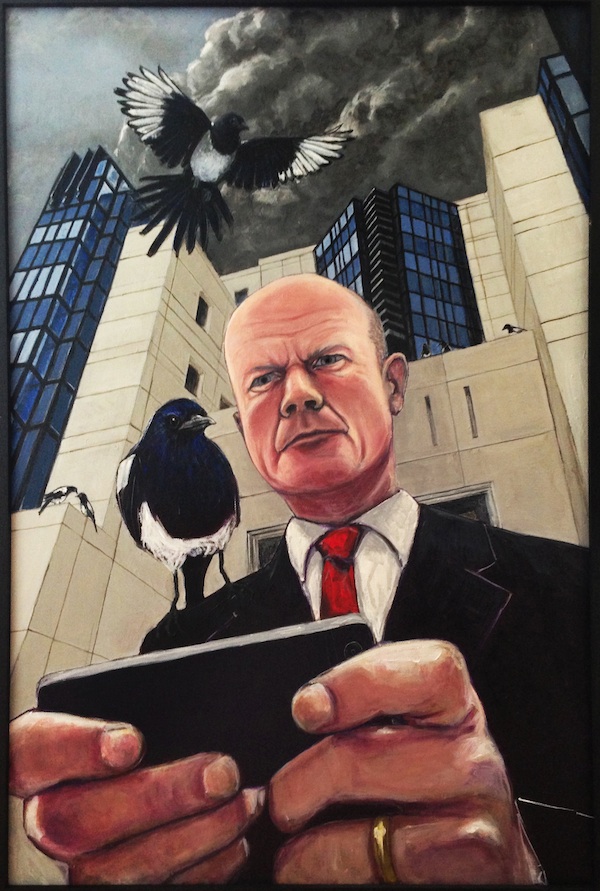
“If you are a law abiding citizen […] you have nothing to fear” – William Hague 9th June 2013
How would you feel if William Hague was reading your email, or inspecting your browsing history, or listening to your phone calls?
Recent revelations have revealed that the government watches you. It watches all of us, we are all now potential terrorist suspects. There is no line discerning ‘people of interest’ from the rest of the population – it’s far easier to suck up data on every website you visit, every email you write, every phone call you make, and let inscrutable algorithms decide whether you are a suspect or not.
These decisions are made behind closed doors, using unaccountable processes about which we cannot be told, all in the interest of National Security.
So, who’s watching you now? This painting. It watches you back, capturing that most private of moments, the interaction between you and the canvas. It plunders your face and stows it in its digital nest, whether you like it or not.
What have you got to hide?
As more and more of our lives occur online, or are mediated by trackable network transactions, the notion of ‘privacy’ is rapidly changing. The trade-off between privacy and convenience leads to massive datasets of mineable information – whether we explicitly give it away to companies like Facebook and Google, or implicitly through massive Government operated ‘meta-data’ surveillance systems.
This work has been made in direct response to the whistleblowing activities of Edward Snowdon, in particular the revelation that the UK intelligence agency GCHQ has installed TCP/IP level monitoring equipment directly to the transatlantic internet backbone running from Cornwall to the east coast of the United States – allowing the potential for direct interception and investigation of much of the world’s internet traffic at 100 gigabits per second.
As more revelations are made about the level of data capture, and ever more draconian infringements on civil liberties are utilised in the name of fighting ‘terrorism’, we are living in a world perfectly primed for a slide into fascistic abuse.
The painting features the current UK Foreign Secretary, William Hague, checking your metadata on his iPhone, outside the MI6 building in London. He is accompanied by seven magpies – a bird renowned for its avaricious nature, finding shiny objects and taking them back to their nests. The number seven alludes to the superstitious rhyme associated with magpies:
One for sorrow
Two for joy
Three for a girl
Four for a boy
Five for silver
Six for gold
Seven for a secret never to be told
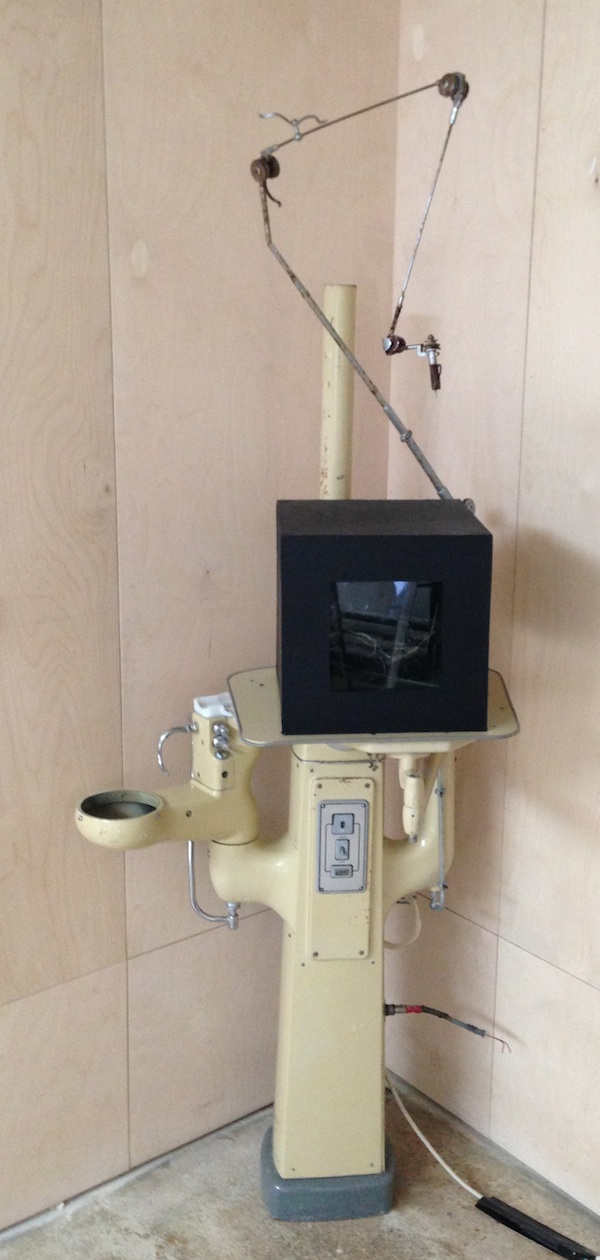
Behind Mr Hagues left eye I have hidden a camera, attached to a Raspberry Pi computer, which constantly watches, looking for the faces of observers. When it spots a face, it records a short video sequence of the observer, looking at the painting. The act of engaging with an artwork is a highly intimate and personal experience, a moment when we are truly alone with ourselves. It is just such private of moments are now being automatically monitored and analysed without our consent.

The recorded videos are then processed and transmitted to a separate box, where they are displayed, floating inside a bird’s nest of twigs and Ethernet cables. The intimate act of looking, as seen by the painting, becomes another shiny object, woven into the magpie’s nest.
Since the painting acts as both recorder and server, transmitting the images over a network, the box itself can operate just as easily on the other side of the world as within the same gallery space – alluding to the ‘data sharing’ agreements between the US and UK which effectively allow UK citizens to be monitored from the US and vice versa, thus circumventing any troublesome local laws.
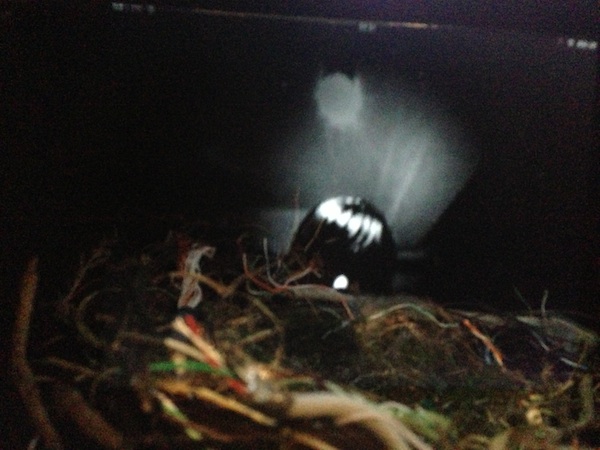
This augmented painting is on display at The New Sublime exhibition until September 8th 2013.
Anamorphic Self Portrait
An anamorphic self-portrait on a custom constructed curved canvas.
The image is ‘correct’ from a specific perspective, however due to the strong hollow face effect my gaze appears to follow you around the room as you move around the painting.
Corporate Fight Club: Value at Risk
The language of business is littered with allusions to violence. The pursuit of the killer product, crushing the competition, dominating the market. Here we see what happens when the veneer of civility is transgressed and matters of business are settled man to man.
The titles are taken from terms used in the world of financial markets.
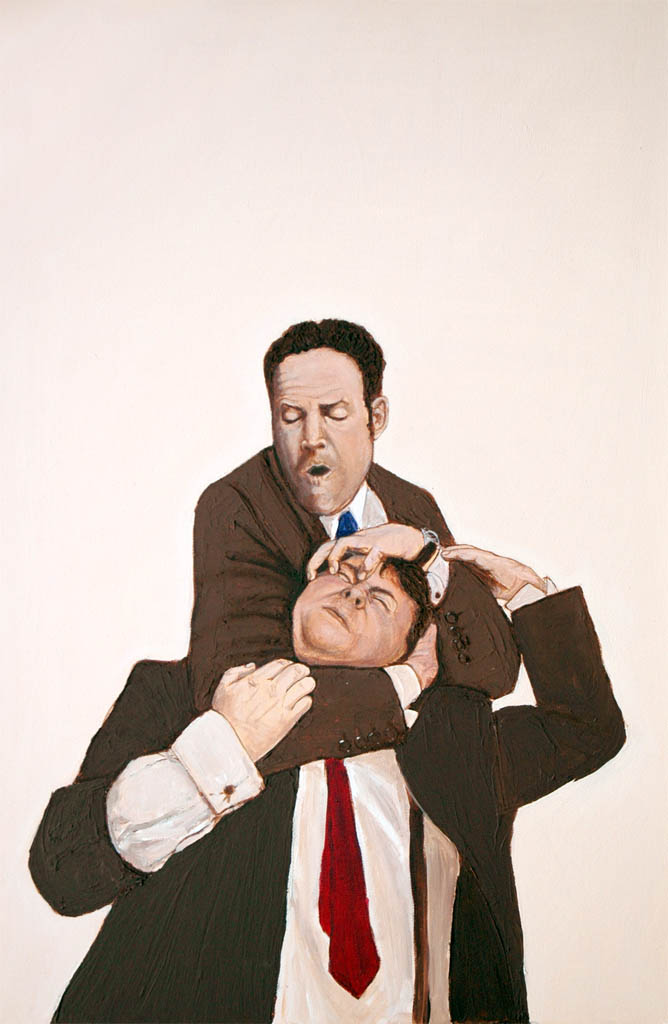
SOLD
Corporate Fight Club: Keynsian Economics
The language of business is littered with allusions to violence. The pursuit of the killer product, crushing the competition, dominating the market. Here we see what happens when the veneer of civility is transgressed and matters of business are settled man to man.
The titles are taken from terms used in the world of financial markets.
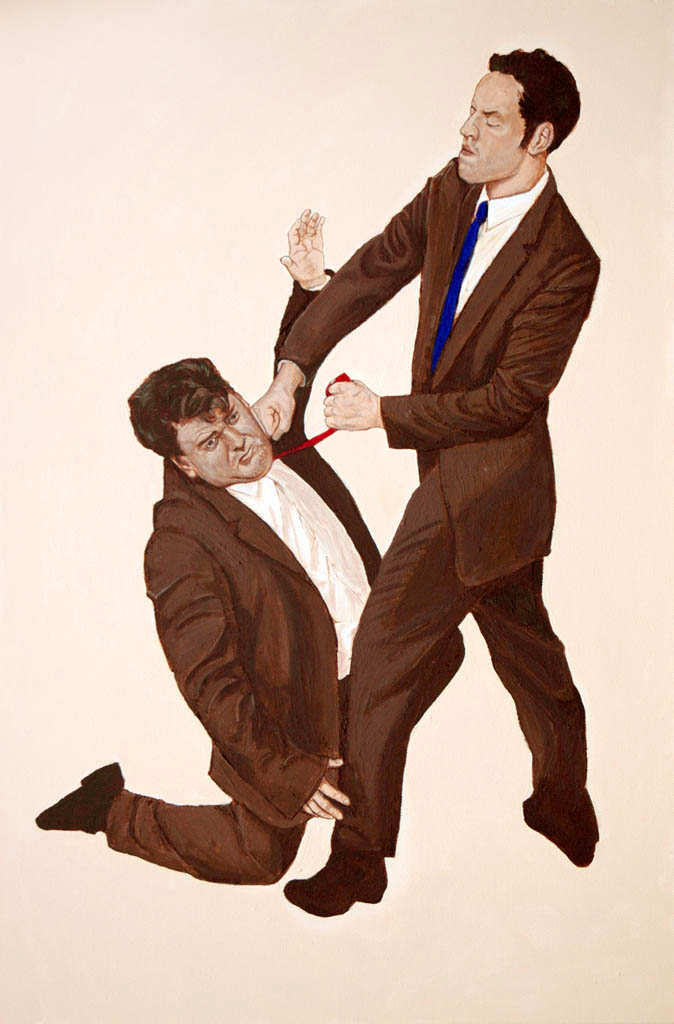
BUY this painting at Saatchi Online
Corporate Fight Club: Dead Cat Bounce
The language of business is littered with allusions to violence. The pursuit of the killer product, crushing the competition, dominating the market. Here we see what happens when the veneer of civility is transgressed and matters of business are settled man to man.
The titles are taken from terms used in the world of financial markets.
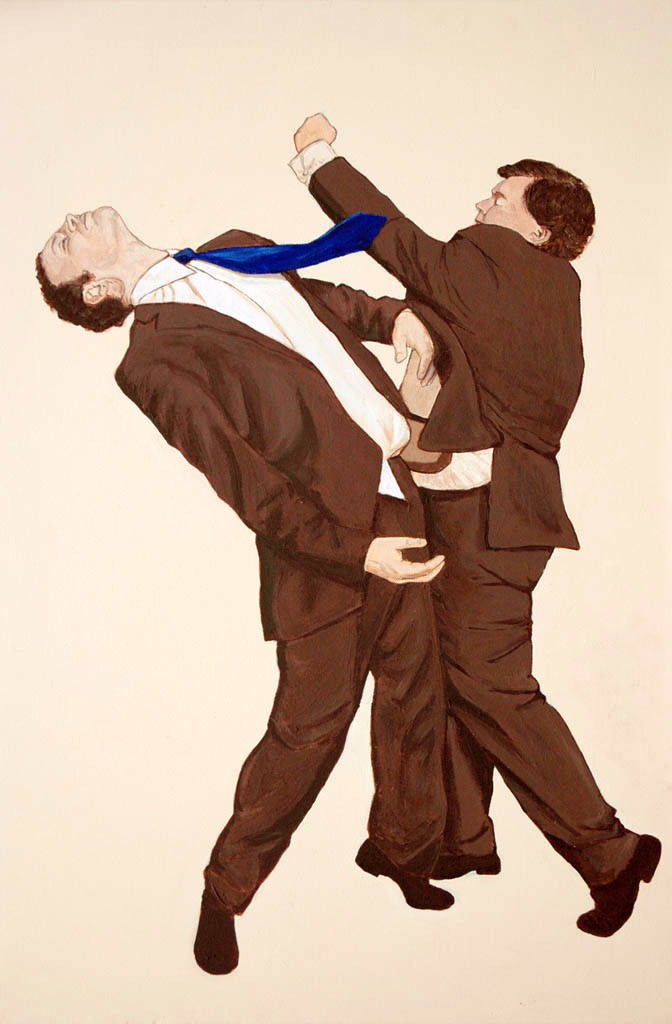
SOLD
Corporate Fight Club: Mark-to-Market
The language of business is littered with allusions to violence. The pursuit of the killer product, crushing the competition, dominating the market. Here we see what happens when the veneer of civility is transgressed and matters of business are settled man to man.
The titles are taken from terms used in the world of financial markets.
